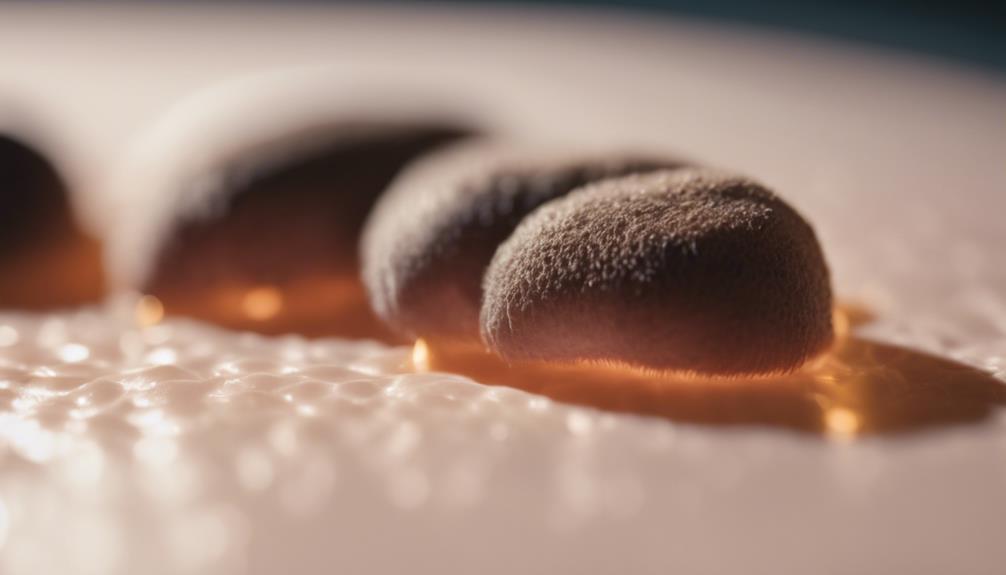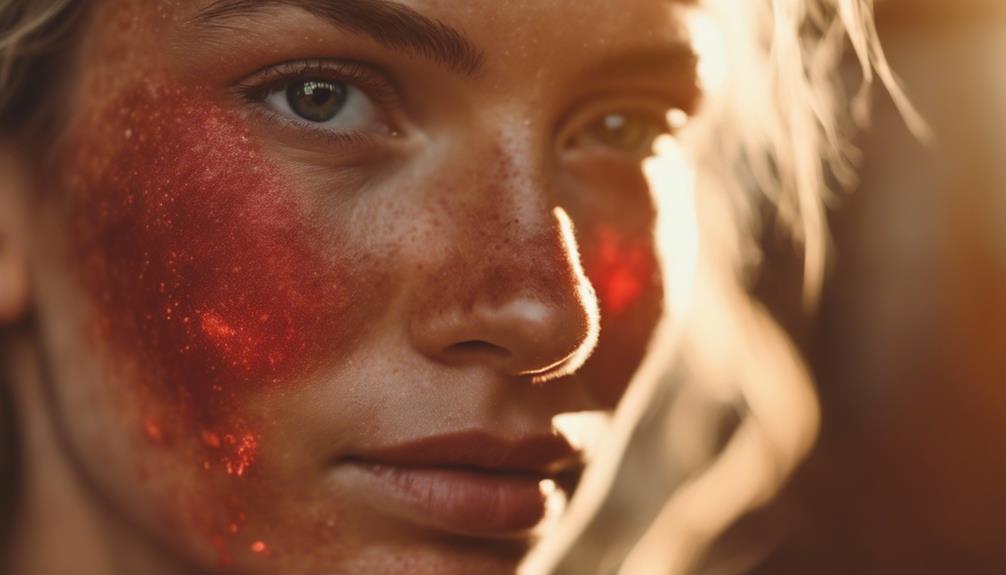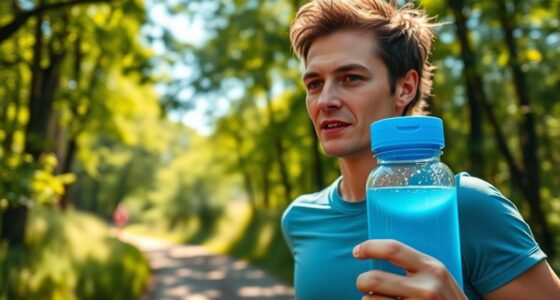If you use tanning beds frequently, it is important to be aware of the warning signs of overuse. Keep an eye out for unusual sensitivity, persistent redness, and itchiness, which could indicate skin damage. Changes in moles, such as darkening or irregular shapes, should be checked by a healthcare professional. You may also experience gritty, red eyes or excessive dryness, which are signs of UV damage. Ignoring these symptoms can increase your risk of serious skin problems, including cancer. Remember to use protective measures like goggles and sunscreen when tanning. Understanding these signs can help protect your health, and there is more to learn about safe tanning options and protective strategies.
Key Takeaways
- Watch for unusual sensitivity, redness, or itchiness, which may indicate skin distress from tanning bed overuse.
- Persistent redness and peeling are signs of overexposure to UV rays and potential skin damage.
- Monitor moles for changes in color, size, or shape, as these can signal serious skin health issues.
- Gritty or red eyes after tanning suggest UV damage; always wear protective goggles during sessions.
Signs of Skin Damage
After using a tanning bed, you might notice signs of skin damage like unusual sensitivity, redness, and itchiness.
Persistent redness signals your skin is distressed, while itchiness can indicate overexposure to UV rays. You may also experience increased dryness and peeling, which reflect your skin's struggle to recover.
Ignoring these warning signs can lead to further damage and premature aging. If you notice itchy rashes or skin reactions, it's essential to reevaluate your tanning habits.
Remember, your skin's health is paramount, and these symptoms shouldn't be overlooked. Taking immediate action can prevent long-term consequences, ensuring your skin remains healthy and vibrant.
Pay attention to these signs—they're your body's way of telling you to slow down.
Long-Term Health Risks
Using tanning beds excessively greatly increases your risk of developing serious long-term health issues, including skin cancer and accelerated aging. Each session exposes your skin to harmful UV rays, with studies showing that tanning before age 35 raises your melanoma risk by 75%.
Over time, this exposure damages collagen and elastin, leading to wrinkles, sagging, and uneven skin tone. You might notice your skin looking duller as it ages prematurely from repeated tanning bed use.
Additionally, conditions like actinic keratoses can develop, which are precursors to skin cancer. By ignoring these risks, you're not just jeopardizing your skin's appearance; you're also increasing your chances of serious health complications down the line.
It's time to reconsider those tanning sessions.
Mole Changes to Watch

Changes in your moles can signal serious skin health issues, so it's important to stay vigilant.
Keep an eye out for any changes in color, especially if your moles become darker or develop a reddish hue.
Blurry or jagged borders on your moles are concerning and should prompt immediate medical attention.
Rapid growth of existing moles or the emergence of new freckles or moles after tanning sessions may indicate excessive UV exposure.
Unusual shapes or sizes in spots also warrant a closer look.
If you notice any of these changes, don't hesitate to consult a dermatologist.
Early detection is vital in addressing potential skin issues and protecting your overall skin health.
Stay proactive about your skin!
Impact on Eye Health
Excessive UV exposure from tanning beds not only affects your skin but can also pose serious risks to your eye health.
If you notice gritty or red eyes after a tanning session, don't brush it off as minor discomfort. This could indicate potential UV damage. Without proper protective goggles, your eyes are vulnerable to harmful rays that can cause photokeratitis—a painful condition resembling a sunburn on your cornea.
Repeated exposure can increase your risk of cataracts and macular degeneration. The World Health Organization highlights the dangers of UV radiation around your eyes, so it's essential to prioritize eye protection.
Always wear goggles and consider using a towel to shield your eyes from direct UV light during tanning.
Identifying Skin Sensitivity

Recognizing signs of skin sensitivity is essential to preventing further damage from tanning bed overuse. You should pay attention to any unusual reactions your skin might've after tanning sessions.
Redness, itchiness, or excessive dryness are clear indicators that your skin is distressed. If you notice persistent redness or peeling, it's a sign you're pushing your skin too far.
Itchy rashes or any unexpected skin reactions following your tanning sessions signal overexposure to UV rays. Ignoring these symptoms can lead to long-term skin damage and increase your risk of skin cancer.
Preventive Measures
Taking preventive measures is essential to safeguarding your skin and eyes from the harmful effects of tanning bed overuse.
Always wear proper tanning goggles to protect your eyes from UV rays, and consider using built-in eye shields to minimize exposure. If you're concerned about discomfort, covering your eyes with a towel can provide extra protection.
Consistently apply a broad-spectrum sunscreen to all exposed skin, even if you're using a tanning bed. Limit your tanning sessions to reduce UV exposure and the risk of skin damage.
Monitor your skin for any changes, such as new spots or changes in existing moles, and consult a dermatologist if you notice anything unusual. Awareness and vigilance are key to maintaining skin health.
Safe Tanning Alternatives

Exploring safe tanning alternatives can help you achieve a sun-kissed glow without the risks associated with tanning beds.
Consider using sunless tanning products like lotions, sprays, or foams that contain dihydroxyacetone (DHA). These products react with your skin's outer layer to create a natural-looking tan without UV exposure.
You can also try bronzers for a temporary glow, or opt for tinted moisturizers that provide a hint of color while hydrating your skin.
Regularly applying sunscreen protects your skin from harmful UV rays, even when using these alternatives.
If you prefer a more natural method, gradual tanners can build color over time, giving you a sun-kissed look without the dangers of tanning beds.
Enjoy the glow safely!
What are the Red Flags of Tanning Bed Overuse and How Can I Recognize Them?
Recognizing the red flags of tanning bed overuse is crucial for your health. Keep an eye out for signs like persistent redness, dryness, or itchiness on your skin. If you experience vision changes, such as blurry vision or sensitivity to light, it may indicate essential insights on tanning bed eye safety. Always prioritize your health and well-being.
Conclusion
In your quest for that perfect tan, remember that the sun's glow can come with hidden dangers.
Coincidentally, while chasing beauty, you might unknowingly invite skin damage and health risks into your life.
By recognizing the red flags and prioritizing your skin's health, you not only protect your appearance but also embrace a deeper sense of well-being.
Choose safer tanning options, and let your skin shine without the shadows of overexposure.
Your future self will thank you.










